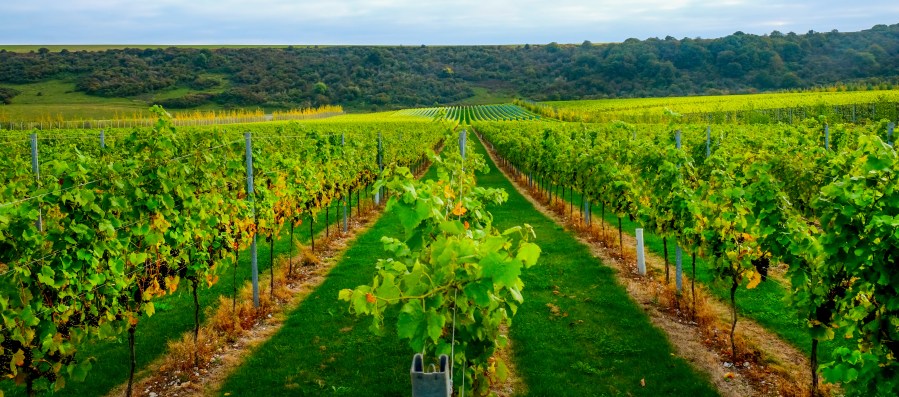Speeding up reactions in grape must and wine.
Enzymes are proteins that are naturally occurring compounds that speed up reactions in grape must and wine. The source of these enzymes are from moulds and the natural biofilm covering the grapes and vines, secreted onto the plant cell walls with the purpose of breaking down this layer to extract nutrients and carbohydrate.
The most well-known enzymes are pectinases and treating must and grapes during the grape processing phase with purified and concentrated naturally occurring enzymes can assist the winemaker in improving yield, improving juice quality, enhancing aromatic expression as well as dealing with problematic compounds such as Glucans from Botrytis that may adversely affect the wine at a later stage.
Pectinases
Pectinases are derived from Aspergillus niger. There are at least six different enzymes responsible for the breakdown of the pectin molecule. The main pectinases are: pectin lyase (PL), pectin methyl esterase (PME), polygalacturonase (PG), arabinanase, rhamnogalacturonase and galactanase.
Many of these enzymes also exist as iso-enzymes (a different version of the same enzyme) that have different pH and temperature optima and affect different parts of the pectin chain.
In the same way that yeast producers culture different strains of Saccharomyces, various strains of Aspergillus are used to produce different enzyme preparations. This is the first point of differentiation between commercial pectinase preparations, since different fungal strains will produce different combinations of enzymes.

Glucanases
Glucanases for winemaking applications are produced by a different fungus than for pectinases – Trichoderma harzianum. When Botrytis infects grape berries, it secretes a significant amount of long chain glucan molecules (ß 1.3-1.6 glucan) into the grape juice. This glucan has a very high molecular weight and is responsible for very high viscosity. Wines produced from this grape juice will contain these long chain glucans, resulting in poor filtration and clarification. Treatment of the wine with glucanase containing enzymes can reduce the glucan chain length and thus improve the wine’s filterability. The enzyme preparation Extralyse® has been specifically developed for this application. The same type of glucan secreted by Botrytis is found in yeast cell walls (yeasts are considered the simplest form of fungi).
This glucan can be liberated from yeast during fermentation and while on the lees. The release of glucans into the wine is accompanied by the release of various other wanted yeast compounds such as mannoproteins, amino acids, low molecular weight peptides and nucleotides, that can have a significant effect on wine mouthfeel. Pectinase/glucanase enzyme preparations such as Extralyse® significantly enhance this yeast autolysis process and thus the release of these positive compounds.
Glycosidases
Glycosidases, are by-products of pectinase production. Glycosidases are a group of enzymes responsible for releasing aroma compounds linked to sugar molecules. When these aroma molecules are linked to sugar molecules (called glycosylated aroma precursors) they are nonaromatic.
Once the sugar molecules are removed they become aromatic. Monoterpenes (linalool, citronellol, nerol, geraniol,…) and C13-norisoprenoid derivatives (ß-Ionone, ß-Damascenone) responsible for floral and fruity notes (rose, violet, citrus and others) are examples of grape varietal aroma compounds that occur in grapes in glycosylated precursor form. The main glycosidase enzyme is a ß-Glucosidase – an enzyme that removes glucose from the aroma compound. These enzymes are inhibited by high glucose concentrations and can therefore only be used towards the end of the alcoholic fermentation.
Sweet dessert wines can benefit from the addition of glycosidases to lift their aroma: in this case a higher enzyme dose should be applied to balance the glucose inhibition. They can significantly enhance the aromatic profile of grape varieties containing mainly terpene aroma compounds such as Bacchus, Gewürztraminer and Muscat. These aroma compounds are also present in smaller quantities in many other varieties. The use of such enzymes on red wine is not advisable as it can destabilize red wine colour, since anthocyanins are also glycosylated.
Purified enzymes
During enzyme production, the fungi produce a whole cocktail of enzymes, including various wanted and unwanted side activities. A “side activity” is defined as an enzyme produced in much smaller amounts than the main enzymes it can be wanted or unwanted depending on the application.
The importance of cinnamyl esterase free enzymes
Cinnamyl esterase (CE) catalyzes the first reaction in the production of vinyl-phenols. This activity is always present in pectinase preparations (10), if not removed by a specific purification step. The second reaction, resulting in the actual production of vinyl-phenols, is catalyzed by wine yeast (decarboxylaze activity). Yeasts that have the ability to catalyze this reaction are categorised as POF (Phenolic Off Flavor) positive yeasts. Vinyl-phenols are responsible for the loss of fruity character and, in worst case scenarios, medicinal smells in white wines.
The importance of glucosidase free enzymes
ß-Glucosidase belongs to a group known as glycosidase enzymes that can free monoterpenes from their non-aromatic precursors, and targeted use of these enzymes after fermentation on specific grape varieties can, therefore, have a very positive outcome. However, ß-Glucosidase can also remove the glucose molecule that stabilizes anthocyanin, forming an unstable aglycon that spontaneously morphs/changes into a colorless form. This is why ß-Glucosidase activity is often referred to as “anthocyanase” activity.
It is important that any enzyme used for the production of red or rosé wines should therefore not have any anthocyanase activity. Laffort’s Lafase® HE Grand Cru and Lafase® Fruit (red wine enzymes) are purified from this activity. Lafazym® CL, Lafazym® Extract and Lafazym® Press (white wine enzymes) are also free of anthocyanase activity and therefore safe for use in the production of rosé wines.


The wall is primarily composed of mannoproteins and ß-glucan





